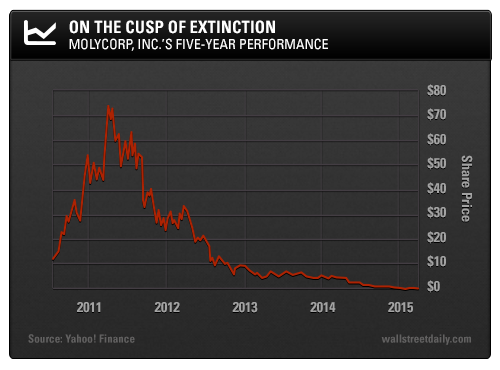On March 22, 60 Minutes ran a segment on the rare earth industry, covering how important rare earth metals are in our modern, technology-based world. Tiny and very powerful magnets made from rare earths are crucial to our consumer gadgets, renewable energy production, and the defense industry.
The report was nice to see. But I wouldn’t base any investment decisions on it.
You see, the report was notable not for the information that was included in the segment, but for how much was left out or simply ignored.
For instance, we don’t have to mine to get rare earths. Rare earths can be obtained from other minerals that we already process, and minerals that already exist can be recycled and repurposed.
In other words, it was typical, mainstream media reporting.
China Is Not the Villain
One point the story emphasized was that the United States is at the mercy of China when it comes to the supply of rare earth metals.
China does control over 90% of the market, but that’s changing. You see, not long ago that number was north of 97%. In other words, China’s monopoly position is fading.
60 Minutes harped on the possibility that China would play the geopolitics game and withhold rare earths from the United States, as it did with Japan a few years ago.
Yes, China could do that…
But the fact is, as pointed out by Roskill Information Services, a rapidly increasing proportion of Chinese rare earth supplies are now needed by its domestic industries. Roskill estimates that more than 70% of rare earth demand comes from China itself!
I reached out to Jack Lifton – a consultant, author, lecturer, and one of the most renowned experts on technology metals in the world – to get to the bottom of this matter.
“The Chinese are modernizing their economy and thereby improving their average citizen’s quality of life faster than any other large nation in history has done,” said Lifton. “One of their projects is to ensure their security of supply of market critical raw materials [MCRMs], and wherever possible to do this through Chinese ownership and/or control of the production and final destination of the MCRMs whether they are produced inside of China or in a foreign country.”
Clearly, it would be in China’s best interest to make sure there are enough rare earths for its economy.
How We Got Into This Situation
60 Minutes completely left out the truly interesting part of the rare earth story. As Lifton said in a recent article for InvestorIntel, we put ourselves in the current situation.
You see, the original Molycorp (no relationship to the current Molycorp. Inc. NYSE:MCP) moved its excess mine production to China’s then-new refineries in the 1980s to avoid U.S. regulations.
To make matters worse, the now defunct Magnequench, managed by General Motors NYSE:GM and a former leader in rare earth permanent magnet production, such as those used by the Pentagon in “smart” bombs, also moved its operations to China to save on costs.
The move included not only the company’s manufacturing division, but also all of its technologies. Although MCP currently holds Magnequench’s patents.
At the time, of course, the move was hailed by Wall Street as a brilliant strategic corporate move.
Lifton says that before U.S. companies started moving their operations, China had little knowledge about the operations of natural resource industries like rare earths.
Of course, these days the Chinese have wisely built on the understanding sparked by cost-cutting American companies.
Molycorp Is Not Our Savior
60 Minutes also positioned MCP as our sole hope for surviving any Chinese cutbacks. But nothing could be further from the truth.
You see, MCP will likely go the way of the dinosaur soon.
The company’s strategy seems to be to produce 50,000 tons of common rare earths in a 120,000-ton market and ignore China’s output. The company’s own auditors question whether it will be able to continue. Those Magnequench patents will certainly be a valuable asset in any bankruptcy proceedings.

The problem with Molycorp’s sole deposit is that it only has a trace of the heavy rare earth metals that are in high demand, says Lifton. Prices for these, such as terbium and dysprosium, have been moving nicely higher since November.
Those high prices do little for Molycorp, since its deposit mainly holds the very common light rare earths that continue going nowhere in price.
Rare Earth Investments
According to Roskill Information Services, the overall rare earth market will grow by 6% from 2014 to 2020. But this figure masks the overall growth rate for each of the 17 individual rare earths.
The highest growth rate is more than 6% annually for those rare earths used to produce magnets, catalysts, and ceramics.
So how should investors play the rare earth industry?
As I’ve spoken about before, your best bet is with junior miners. There’s always a risk that these companies won’t obtain enough funding to see the projects through, so due diligence is required. There are four companies with properties on U.S. soil: Rare Element Resources AMEX:REE, Texas Rare Earth Resources OTC:TRER, U.S. Rare Earths OTC:UREE, and Ucore Rare Metals OTC:UURAF.
Ucore, particularly, has piqued the interest of the U.S. Defense Department since it has the most advanced and highest-grade heavy rare earth asset in the United States in Ketchikan, Alaska.
And the chase continues,
by Tim Maverick
